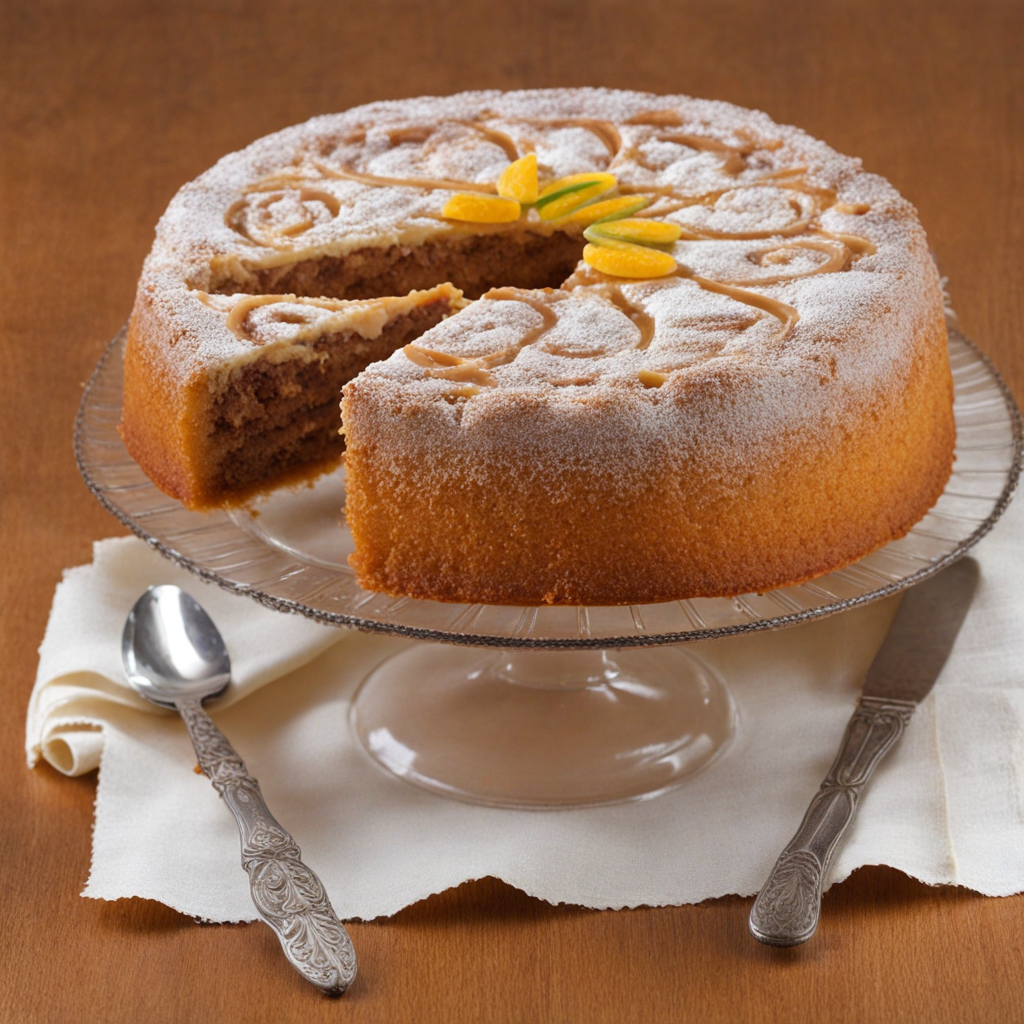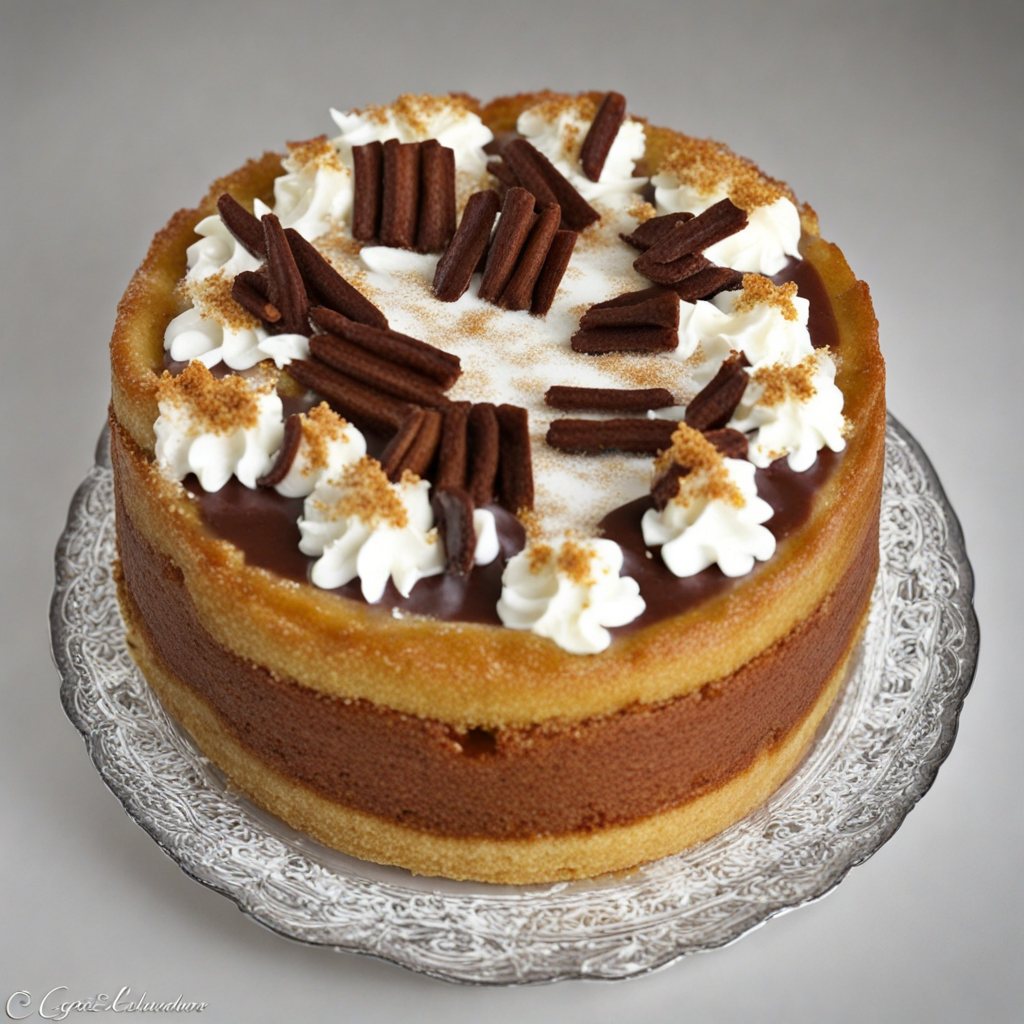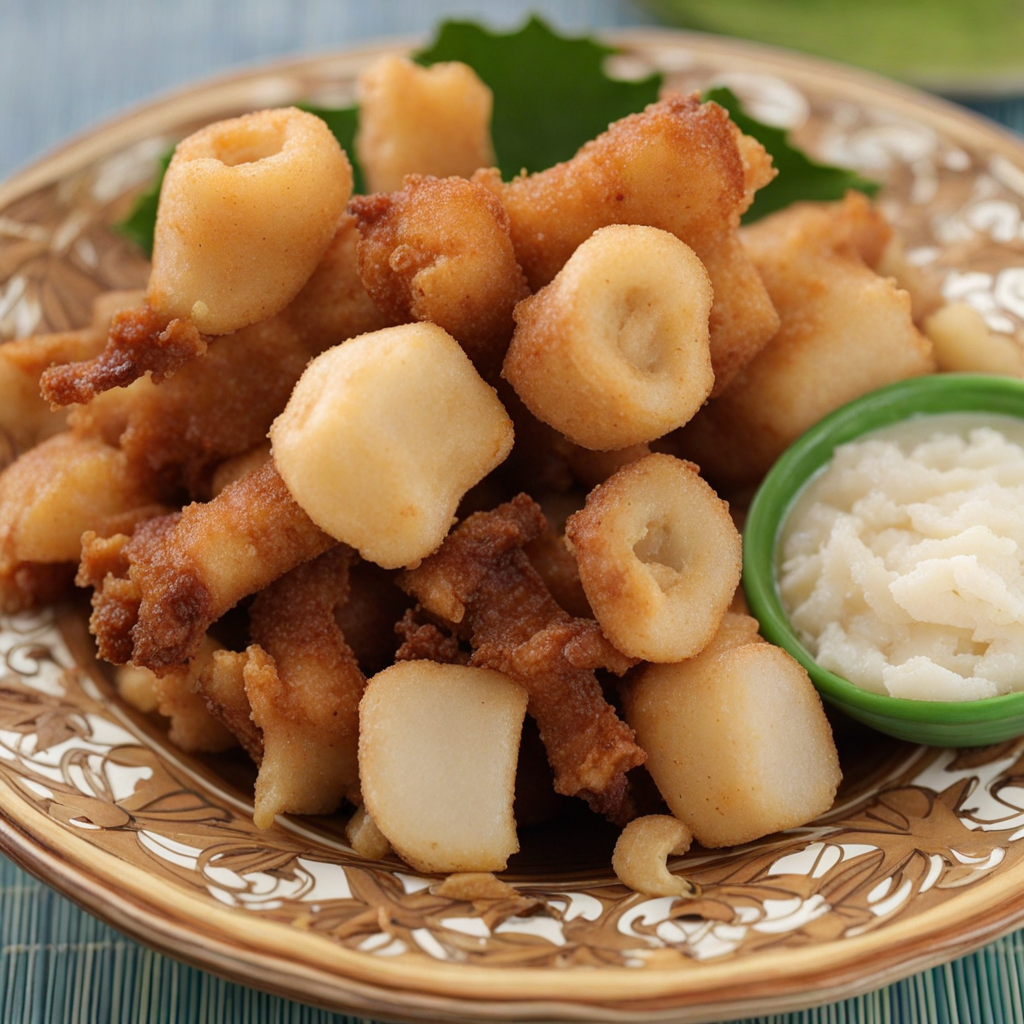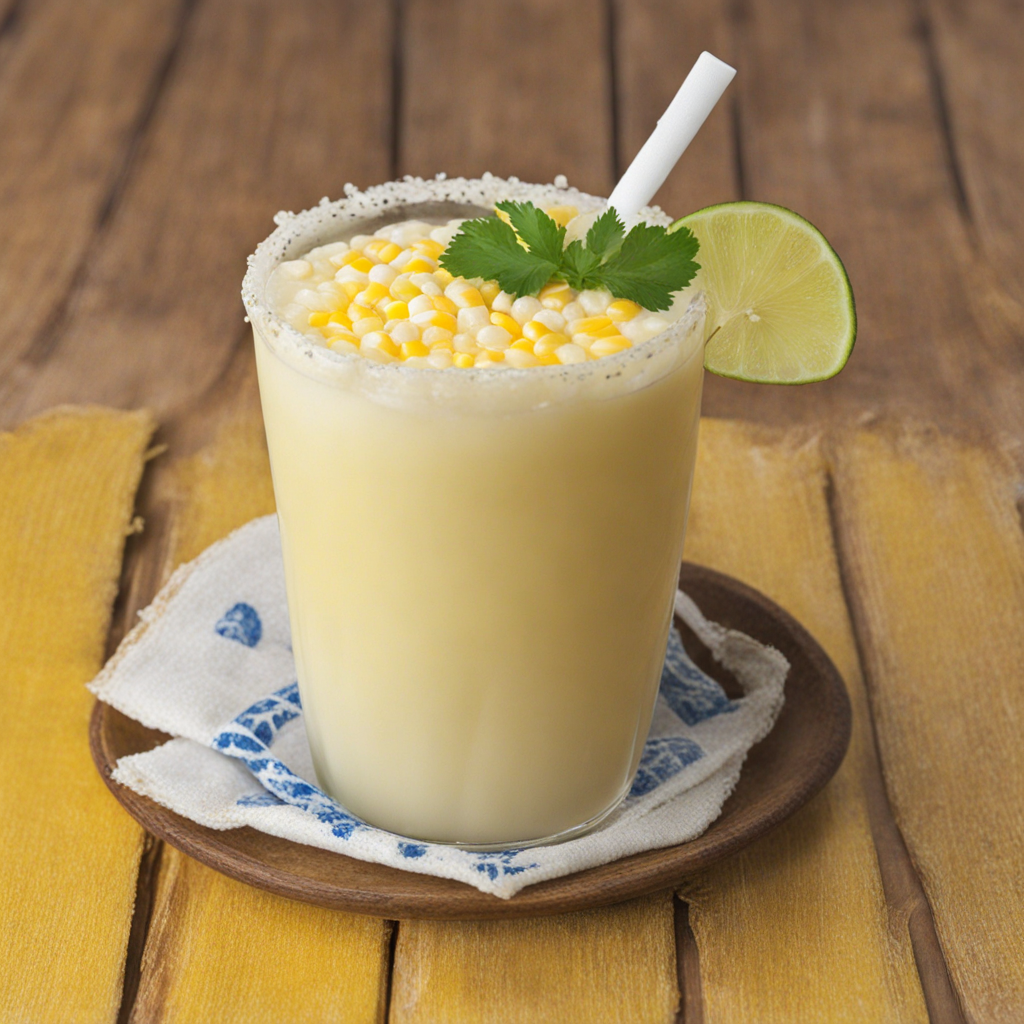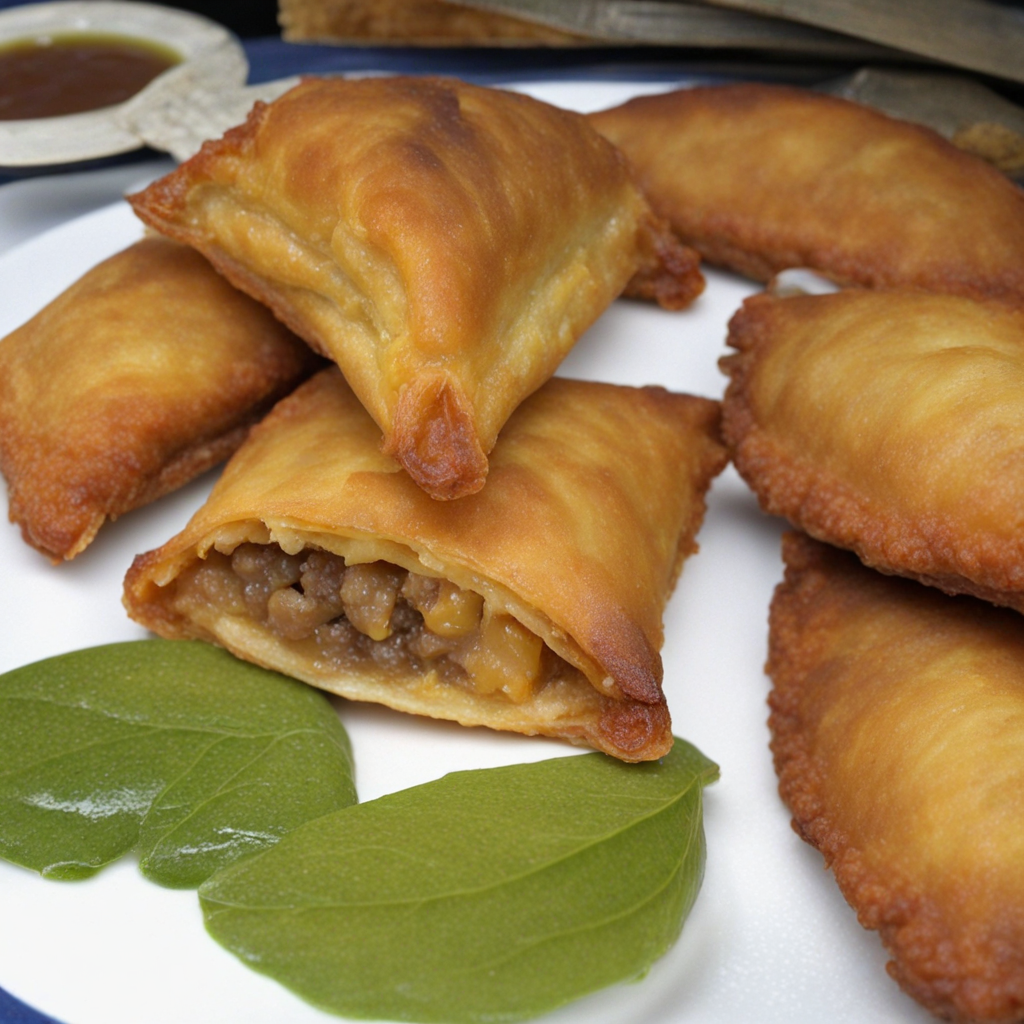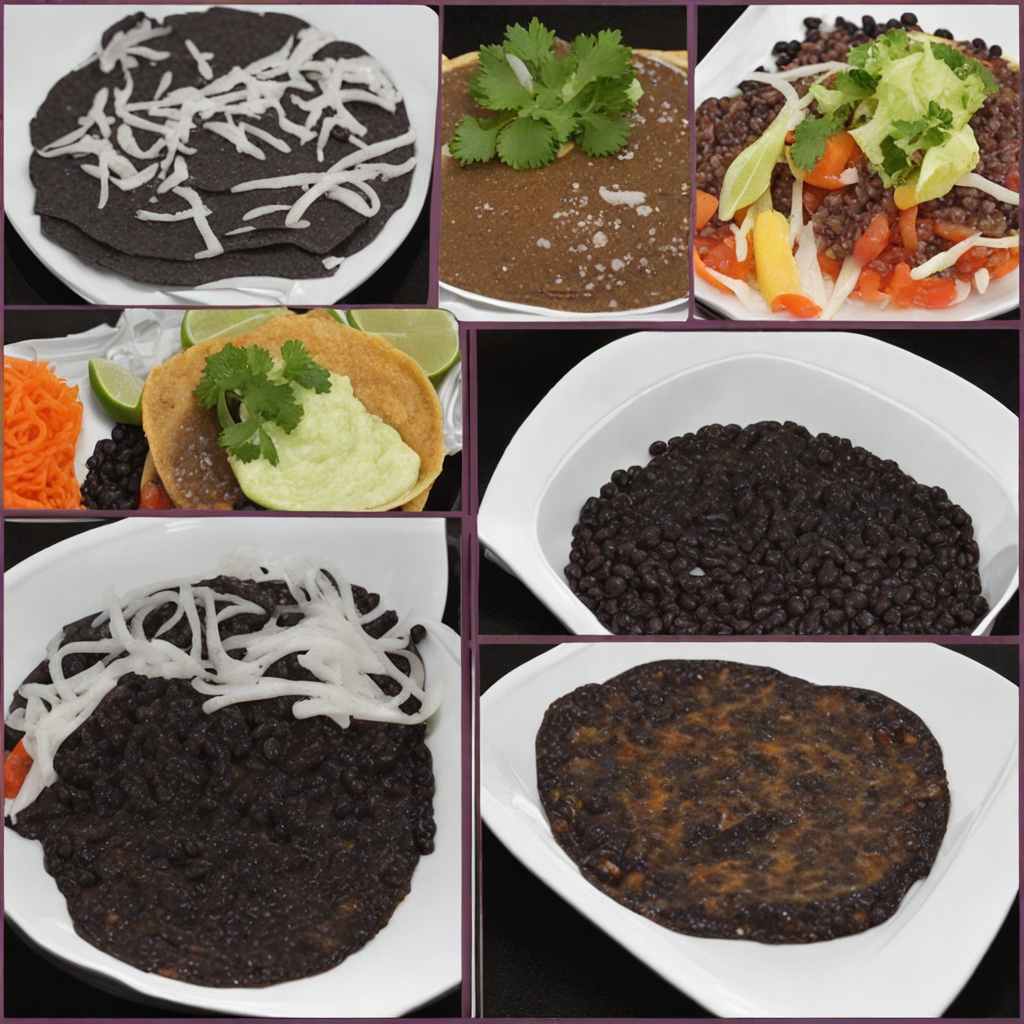Marquesote
Marquesote is a delightful Salvadoran treat that captures the essence of traditional Central American flavors. This moist cake is primarily made from a combination of flour, sugar, eggs, and a touch of baking powder, which gives it a light and airy texture. Often infused with rich flavors such as vanilla or a hint of cinnamon, Marquesote offers a subtle sweetness that pairs beautifully with its tender crumb. It's common for this cake to be served during festive occasions or family gatherings, making it a beloved staple in Salvadoran culture. One of the distinguishing features of Marquesote is its unique preparation method. The batter is typically poured into a round or rectangular mold, where it is baked until golden brown and fragrant. The cake rises impressively in the oven, creating a lovely dome shape that is visually appealing. Once baked, it can be dusted with powdered sugar or served with a side of fresh fruit, enhancing both its presentation and taste. When you take your first bite of Marquesote, you’ll be greeted with a soft and fluffy texture that melts in your mouth. The cake is often enjoyed with a cup of coffee or a refreshing beverage, making it a perfect accompaniment for an afternoon snack or dessert. With its comforting flavors and inviting aroma, Marquesote provides a taste of home and tradition, inviting you to savor the rich culinary heritage of El Salvador.
How It Became This Dish
Marquesote: A Delicious Slice of El Salvador’s Culinary Heritage El Salvador, a small Central American nation known for its rich cultural tapestry, vibrant landscapes, and warm-hearted people, also boasts a distinctive culinary heritage. Among its many traditional foods, one of the most beloved is Marquesote—a delightful cake steeped in history and cultural significance. This sweet treat not only tantalizes the taste buds but also serves as a testament to the blending of indigenous and colonial influences that characterize Salvadoran cuisine. Origins of Marquesote The origins of Marquesote can be traced back to the colonial period when the Spanish colonizers brought with them a plethora of baking techniques and ingredients. The term "Marquesote" itself is believed to derive from the Spanish word "marquesa," which refers to a type of cake or pastry. The cake is thought to have roots in the Spanish tradition of sponge cakes, particularly the "bizcocho," which made its way to Central America through culinary exchanges during the colonization of the Americas. However, Marquesote is not merely a replica of its Spanish predecessors. It has evolved within the context of Salvadoran culture, absorbing local flavors and ingredients. For instance, the incorporation of cornmeal—an essential staple in indigenous Mesoamerican diets—reflects the adaptation of the cake to local tastes. This fusion of ingredients represents a broader narrative of survival and adaptation, as indigenous peoples blended their culinary traditions with those introduced by the Europeans. Ingredients and Preparation The traditional Marquesote is a light, airy cake made primarily from flour, sugar, eggs, and baking powder, often flavored with vanilla or lemon zest. One of its distinguishing features is the use of cornmeal, which gives the cake its unique texture. This incorporation of cornmeal is a nod to the indigenous heritage of El Salvador, where corn is considered a sacred food, central to the diet and culture. The preparation of Marquesote is relatively straightforward, making it accessible for home bakers. The ingredients are combined to create a batter that is then poured into a round cake pan. The cake is baked until golden brown and fluffy, typically served dusted with powdered sugar or accompanied by a sweet syrup. While the classic recipe remains popular, variations can include additional flavors, such as coconut or chocolate, reflecting the creativity of Salvadoran cooks. Cultural Significance Marquesote holds a special place in Salvadoran culture, often enjoyed during festive occasions, family gatherings, and celebrations. It is a staple at birthdays, weddings, and religious holidays, symbolizing joy and community. Sharing Marquesote is not merely about the act of eating; it embodies the spirit of togetherness and hospitality that characterizes Salvadoran culture. For many Salvadorans, the preparation and enjoyment of Marquesote are interwoven with cherished memories of family and home. Elders often pass down recipes and baking techniques, ensuring that the tradition endures through generations. In this way, Marquesote transcends its role as a mere dessert; it becomes a vessel of familial and cultural identity. Evolution Over Time Over the years, Marquesote has undergone various transformations, reflecting broader socio-economic changes and culinary trends. In the early 20th century, as urbanization increased and more Salvadorans migrated to cities, the availability of ingredients and baking equipment evolved. This led to the emergence of bakeries that produced Marquesote on a larger scale, making it accessible to a wider audience. Bakeries began to innovate, incorporating new flavors and presentation styles, while maintaining the essence of the traditional cake. In recent decades, globalization has further influenced the evolution of Marquesote. The rise of social media and food blogs has allowed Salvadoran cuisine to gain international recognition, prompting younger generations to explore and reinterpret traditional recipes. Chefs and home cooks alike are experimenting with fusion flavors, incorporating ingredients like chocolate or tropical fruits, thereby broadening the appeal of Marquesote beyond its traditional roots. Despite these changes, the heart of Marquesote remains intact. It continues to evoke nostalgia and pride among Salvadorans, both at home and in the diaspora. For many, enjoying a slice of Marquesote is a way to reconnect with their cultural heritage, a reminder of family gatherings and celebrations. Marquesote in Contemporary Salvadoran Life Today, Marquesote remains a beloved dessert in El Salvador and among Salvadoran communities worldwide. It is often featured at local festivals, food fairs, and cultural events, where it is celebrated alongside other traditional Salvadoran dishes. The cake is also a popular choice for catering events and is frequently found in restaurants that specialize in Salvadoran cuisine. Moreover, Marquesote has gained a new platform through social media, where home bakers and chefs showcase their creations, share recipes, and celebrate the cultural significance of this beloved cake. This digital connection fosters a sense of community among Salvadorans, allowing them to share their culinary heritage with others and inspire new generations to embrace traditional cooking. Conclusion Marquesote is more than just a cake; it is a symbol of El Salvador’s rich cultural heritage, embodying the fusion of indigenous and colonial influences that have shaped the nation’s culinary landscape. Its origins tell a story of adaptation and resilience, while its continued popularity speaks to the enduring value of tradition in contemporary Salvadoran life. As we savor a slice of Marquesote, we are invited to participate in a shared history—a delicious reminder of the bonds that unite families and communities, transcending time and place. Whether enjoyed at a festive celebration or as a comforting treat at home, Marquesote remains a beloved staple that nourishes both the body and the spirit, ensuring that the flavors of El Salvador continue to thrive.
You may like
Discover local flavors from El Salvador


